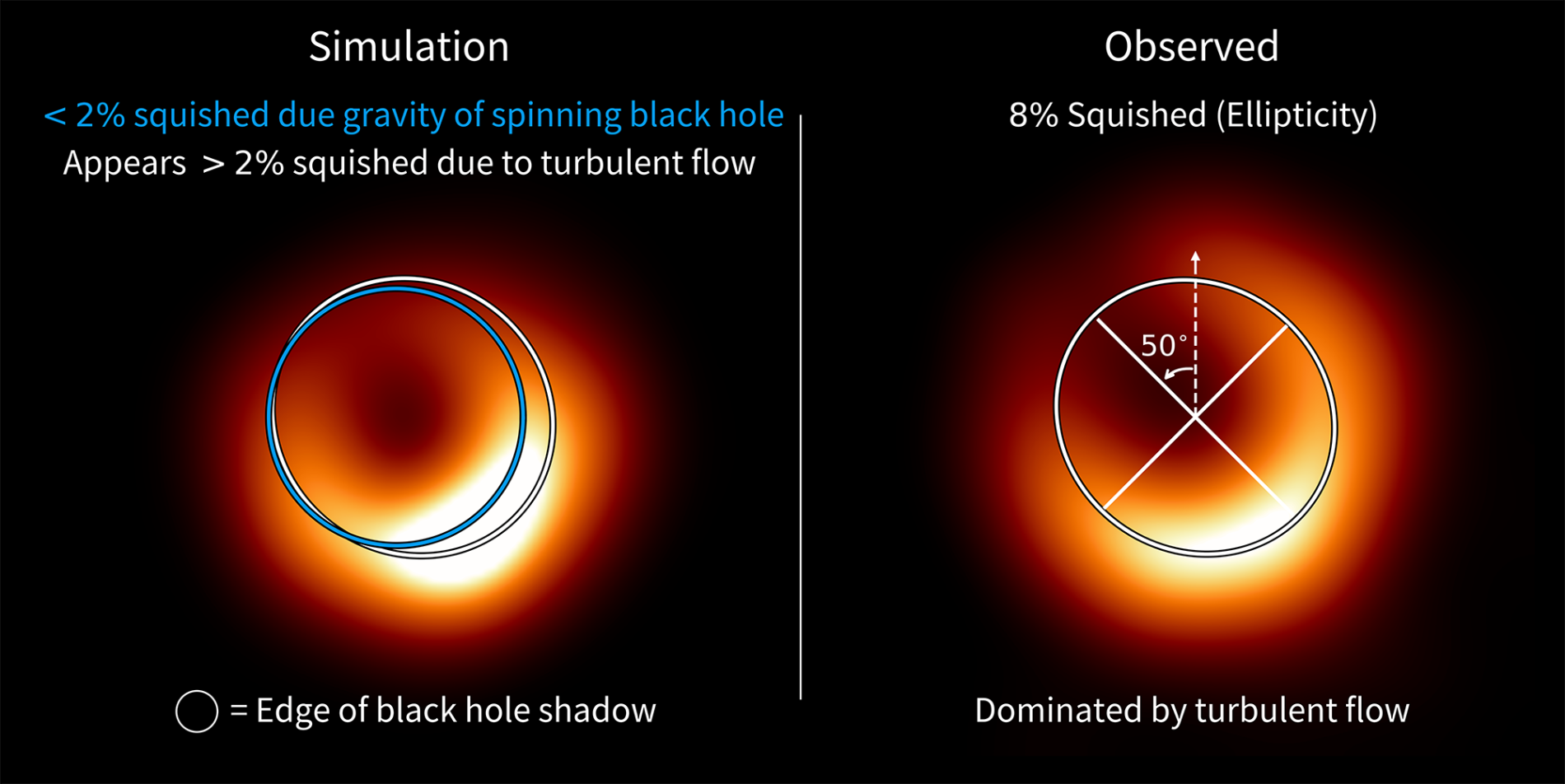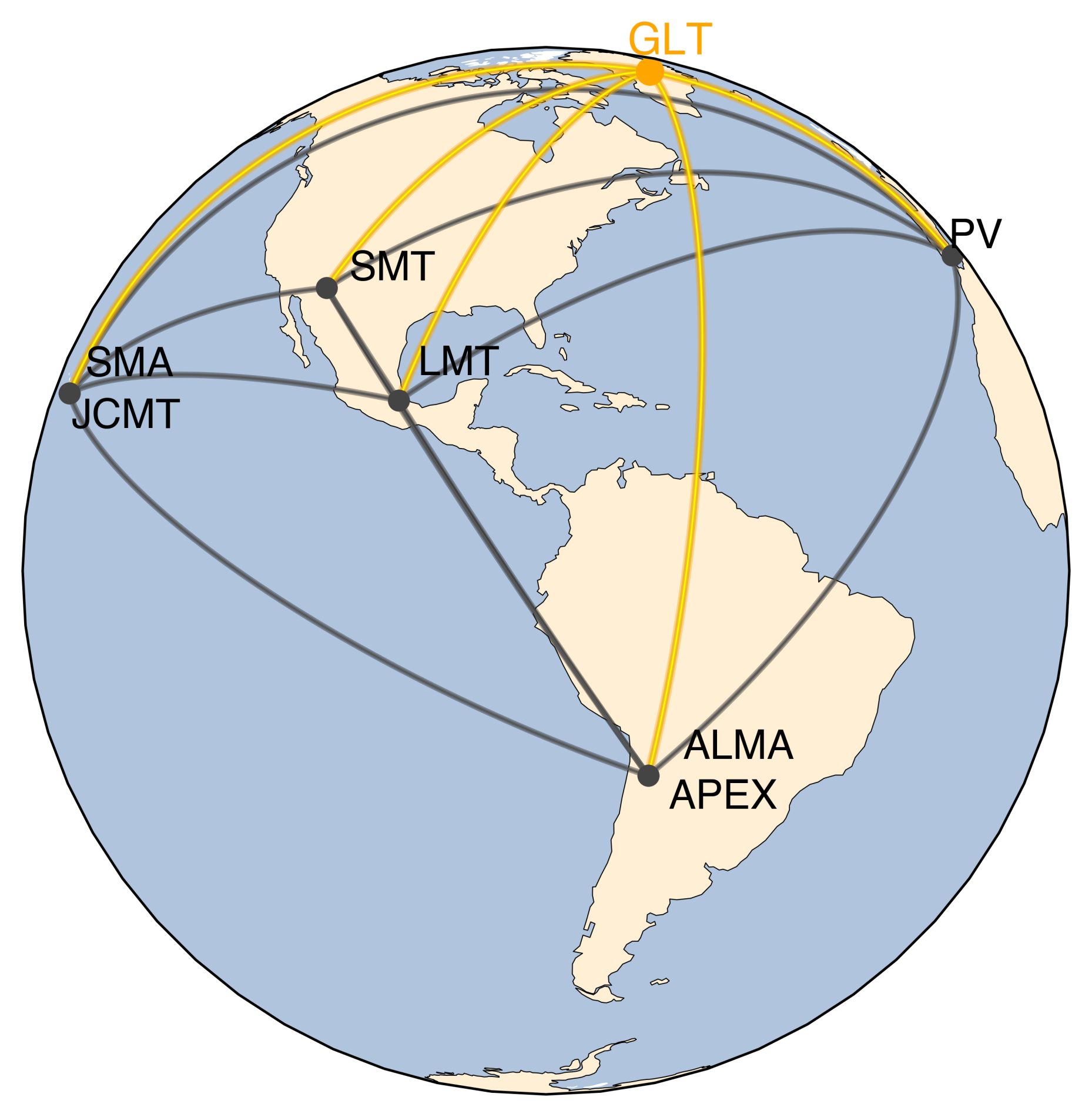Event Horizon Telescope reveals why M87’s black hole ring is not a perfect circle
Study co-led by the Instituto de Astrofísica de Andalucía (IAA-CSIC) reveals that the ellipticity of the M87* ring is due to plasma turbulence and not due to its spin.
The results, published in Astronomy & Astrophysics, bring the scientific community closer to isolating the gravitational signature of a black hole and directly measuring its spin.
The galaxy M87, located about 55 million light-years from Earth, hosts at its core the supermassive black hole M87*, whose image whose image went viral around the globe in 2019 thanks to the Event Horizon Telescope (EHT). That historic photograph revealed a luminous ring around M87* with a slightly elongated shape that raised many questions: why is it not perfectly circular? Today, the journal Astronomy & Astrophysics (A&A) publishes a study co-led by the Instituto de Astrofísica de Andalucía (IAA-CSIC) that sheds light on the issue.
“We have demonstrated that the slightly elongated shape of the ring is not caused by gravity or by the black hole’s spin, but by turbulent astrophysical processes in the surrounding plasma,” explains Rohan Dahale, researcher at the IAA-CSIC and co-lead author of the study.
Einstein’s general theory of relativity predicts that the “shadow” of a spinning black hole is slightly flattened, adopting an elliptical shape due to the distortion of spacetime caused by its spin. Quantifying this ellipticity provides a direct path to estimating the black hole’s spin—one of the two parameters, along with mass, that fully define its appearance and physical properties.
BEYOND A PERFECT CIRCLE: WHAT THE SHAPE OF M87* REVEALS
To refine this measurement, the scientific team added the Greenland Telescope to the EHT network in 2018, increasing both the spatial resolution and the sensitivity of the collaboration, which tripled compared to previous campaigns. Using five independent image reconstruction algorithms based on aperture synthesis techniques, they consistently found that the ring deviates from a perfect circle by about 8%. They also discovered that the ellipse is tilted roughly 50° counterclockwise from North, roughly aligned with the brightest point on the ring.
To determine whether gravity alone could explain the elongated shape, the team compared the real images with a series of computer simulations exploring different physical scenarios, including various spin values for the black hole. Surprisingly, they found no clear relationship between spin and the elliptical shape in the simulated images. Instead, they discovered that the elongation of the ring was associated with what they call “non-ring emission”: a diffuse glow surrounding the main ring, more intense in models with very energetic electrons and a brighter jet.
“These results suggest that the ellipticity of M87* is mainly a footprint of the turbulent plasma swirling around the black hole, rather than a direct reflection of its gravitational strength or spin,” says Ilje Cho (KASI/Yonsei University), co-lead author of the study. “This allows us to better disentangle the role of gravity from that of astrophysical processes in shaping these remarkable images and brings us a step closer to understanding how matter behaves in the most extreme environments in the universe.”

This figure compares simulated (left) and observed (right) images of the black hole M87*. In simulations, the actual shadow of a spinning black hole (outlined in blue) appears less than 2% squished due to gravity alone. However, with the current resolution of the EHT, due to turbulent plasma near the black hole the ring can appear 2–20% distorted. The EHT observations (right) reveal the ring is squished by about 8%, with its major axis tilted 50° counterclockwise from north, roughly aligned with the brightest spot. This suggests the observed ellipticity is driven NOT by gravity or spin, but by turbulent matter swirling around the black hole. Credit: Rohan Dahale (IAA-CSIC), Ilje Cho (KASI/Yonsei University)
Although measuring the spin of M87* in the presence of such turbulence remains a major challenge, the team proposes moving forward through two complementary approaches: first, by conducting sustained observations over the years to smooth out short-term fluctuations and reveal the subtle gravitational distortions currently obscured; second, by launching space-based telescopes that, through very long baseline interferometry (VLBI), would be capable of directly resolving the “photon ring”—the thin light shell orbiting the black hole that carries a purer gravitational signal, ideal for measuring spin.
“With the upgrades in the next-generation EHT (ngEHT) and space missions, we are getting closer to isolating the true gravitational signature of a black hole,” explains Rohan Dahale (IAA-CSIC). “And thus, the information contained in the images themselves will allow us to directly measure spin,” he concludes.
ABOUT THE EVENT HORIZON TELESCOPE
The Event Horizon Telescope (EHT) is an international collaboration that has created a virtual Earth-sized telescope by computationally linking radio observatories around the globe. It is designed to image black holes and test fundamental physics in extreme gravitational environments.

Credit: Rohan Dahale (IAA-CSIC), Ilje Cho (KASI/Yonsei University)
- Origin of the ring ellipticity in the black hole images of M87*
- https://www.aanda.org/10.1051/0004-6361/202555235
- Rohan Dahale (Instituto de Astrofísica de Andalucía) - rdahale@iaa.es
- Dr. Ilje Cho (Korea Astronomy and Space Science Institute (KASI) / Yonsei University) - icho@kasi.re.kr
- Instituto de Astrofísica de Andalucía (IAA-CSIC)
- Unidad de Divulgación y Comunicación
- Amanda López – alm@iaa.es
- Emilio García – garcia@iaa.es - 649 407 445 (vía whatssap)
- Celia Navas - navas@iaa.es
- https://www.iaa.csic.es
- https://divulgacion.iaa.csic.es

